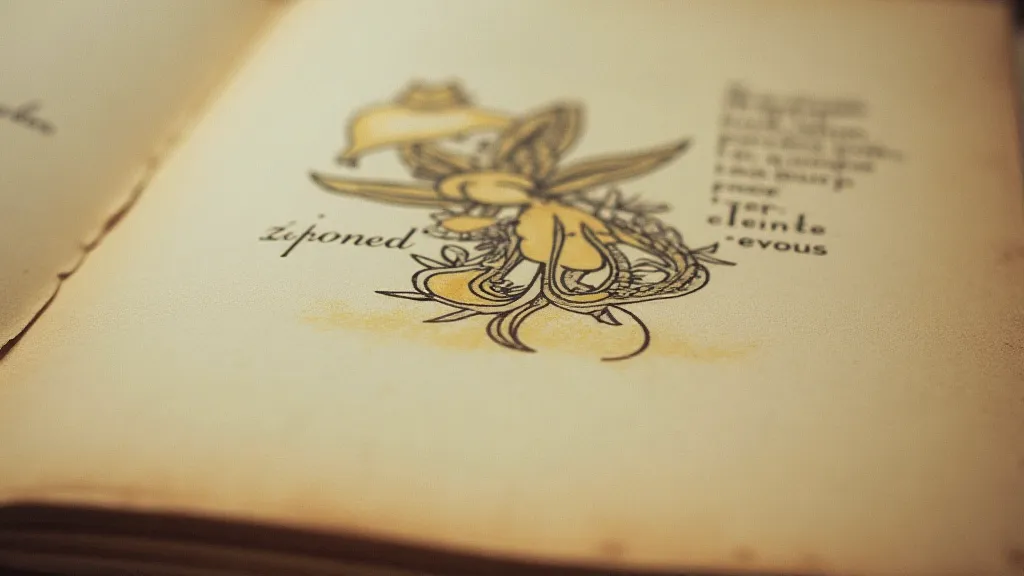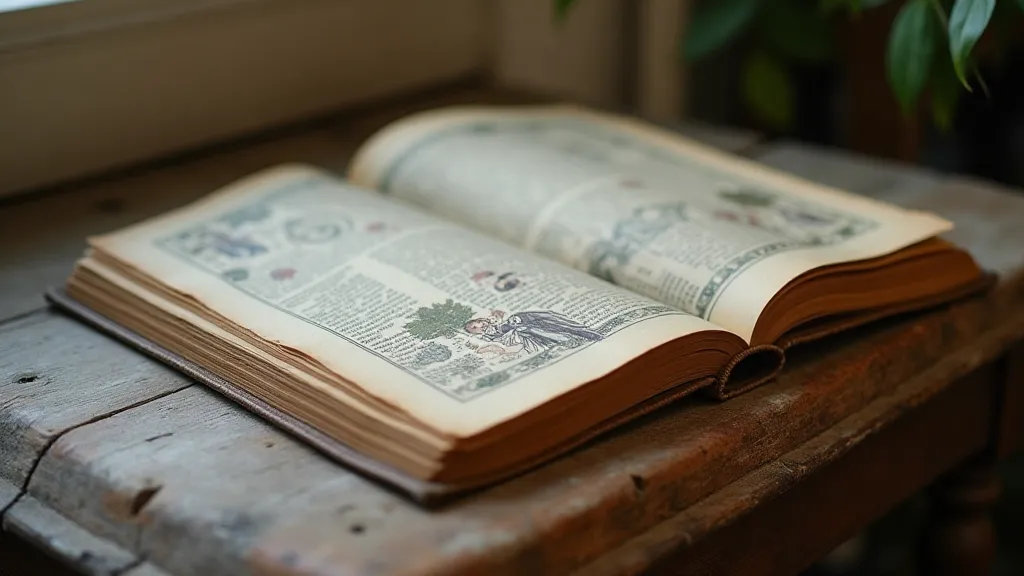The Luminescent Thread: How Bibliomancy Reveals the Unspoken Language of Children’s Literature
There's a peculiar magic that clings to vintage children’s books. It's not simply the charming tales of faraway lands or talking animals, but something deeper – a resonance woven into the very fabric of the object itself. We often focus on the stories printed within, but what about the unspoken language of the book’s physical form? I believe that understanding this language, a practice I’m calling ‘bibliomancy,’ allows us to unlock a richer, more profound connection to these literary treasures. It's an intuitive reading, a feeling, a conversation with the subconscious sparked by typography, page layout, illustration, and the very texture of the paper.
My fascination began, unexpectedly, with an antique accordion. My grandfather, a quiet, thoughtful man, possessed one, its bellows worn soft with age and countless melodies. Holding it, feeling the cool, smooth wood, you could sense the echoes of his playing, the joy and perhaps even a touch of melancholy. It made me hyper-aware of how objects carry history, not just in what they *do*, but in *how* they are.
That same sense of poignant history permeates the vintage children’s books I’ve come to collect. It's not about rarity, though a first edition is undoubtedly exciting. It’s about the way the ink bleeds slightly on the aged paper, the faint scent of vanilla and dust that clings to the pages, the way the spine creaks when opened – these details speak volumes, contributing to the overall emotional impact in a way words alone cannot.

The Craftsmanship of Connection
Consider the role of the printer. Before digital design, every element was carefully considered. The choice of typeface – a bold, sturdy block letter for a heroic tale, or a delicate, flowing script for a fairy story – wasn't arbitrary. It was a deliberate attempt to shape the reader's experience. The kerning (the spacing between letters) influences readability and adds to the overall aesthetic. Early children's books often featured intricate borders, hand-lettered titles, and painstakingly drawn illustrations, all contributing to a sense of artistry and care that is rarely seen in modern publications. Think of the work of Kate Greenaway, whose illustrations for "A Book of Patience" remain timeless in their delicate beauty. The quality of the paper itself mattered— thicker stock for durability, thinner paper allowing for more illustrations, and each imparting a different tactile feel.
These choices weren't simply about aesthetics. They were about crafting a complete sensory experience for the young reader. They were about creating a world that felt real, a world that invited exploration and imagination. Even the binding – whether a sturdy cloth binding designed to withstand repeated readings, or a delicate paper cover more suited to display – communicated something about the book’s intended audience and lifespan.
Beyond the Narrative: A Language of Form
Bibliomancy, as I understand it, isn’t about deciphering a secret code. It’s about cultivating a sensitivity to these subtle cues. It’s about noticing how a particular illustration style evokes a specific feeling – the bright, cheerful illustrations of L. Frank Baum’s “The Wonderful Wizard of Oz,” or the darker, more gothic imagery of Arthur Rackham’s illustrations for “Grimm’s Fairy Tales.” The placement of text on the page, the use of whitespace, and the rhythm of the layout all contribute to the overall pacing and emotional impact of the story.
Think about the way early fairy tale collections were often presented. The illustrations were often placed opposite the text, creating a visual counterpoint to the narrative. The page layout was designed to be easily digestible for young children who were just beginning to learn to read. Modern picture books, while often beautifully illustrated, sometimes lack this deliberate pacing and visual rhythm. They can feel rushed, lacking the quiet contemplation that characterized earlier publications.
I recall handling a copy of “Alice’s Adventures in Wonderland” with Tenniel’s exquisite engravings. The slight foxing (those charming brownish spots on the paper – a natural consequence of aging) didn't detract from its beauty; it *enhanced* it. It felt like a living document, a testament to the countless hands that had turned its pages over the years.

Restoration and Respect: Preserving the Resonance
The practice of bibliomancy also informs my approach to restoration. I’m not a professional conservator, but I believe in handling these books with respect and sensitivity. Excessive cleaning or aggressive repairs can damage the integrity of the object and erase some of its inherent character. A slight crease in the spine, a faded illustration – these are not flaws; they are evidence of a book's history.
Sometimes, a little care is all that's needed. Gently cleaning the dust from the pages, repairing a loose binding with acid-free tape, storing the book in a protective archival sleeve – these are simple steps that can help preserve its beauty and extend its lifespan. The goal isn't to make the book look brand new; it’s to stabilize its condition and prevent further deterioration. It's about appreciating its age, and accepting its imperfections as part of its story.
The Enduring Power of Connection
Ultimately, bibliomancy is about reconnecting with the magic of children’s literature – not just through the stories themselves, but through the entire experience of engaging with the physical object. It's about understanding that these books are more than just collections of words and pictures; they are vessels of history, artistry, and emotion. They are tangible links to a bygone era, offering a glimpse into the minds and hearts of those who created and cherished them. By paying attention to the unspoken language of form, we can unlock a deeper appreciation for these literary treasures and pass on their enduring power to future generations.
The next time you hold a vintage children's book, don't just read the story. Feel the paper, examine the illustrations, and consider the hands that have held it before you. Listen to the quiet whispers of history. You might be surprised by what you discover.






